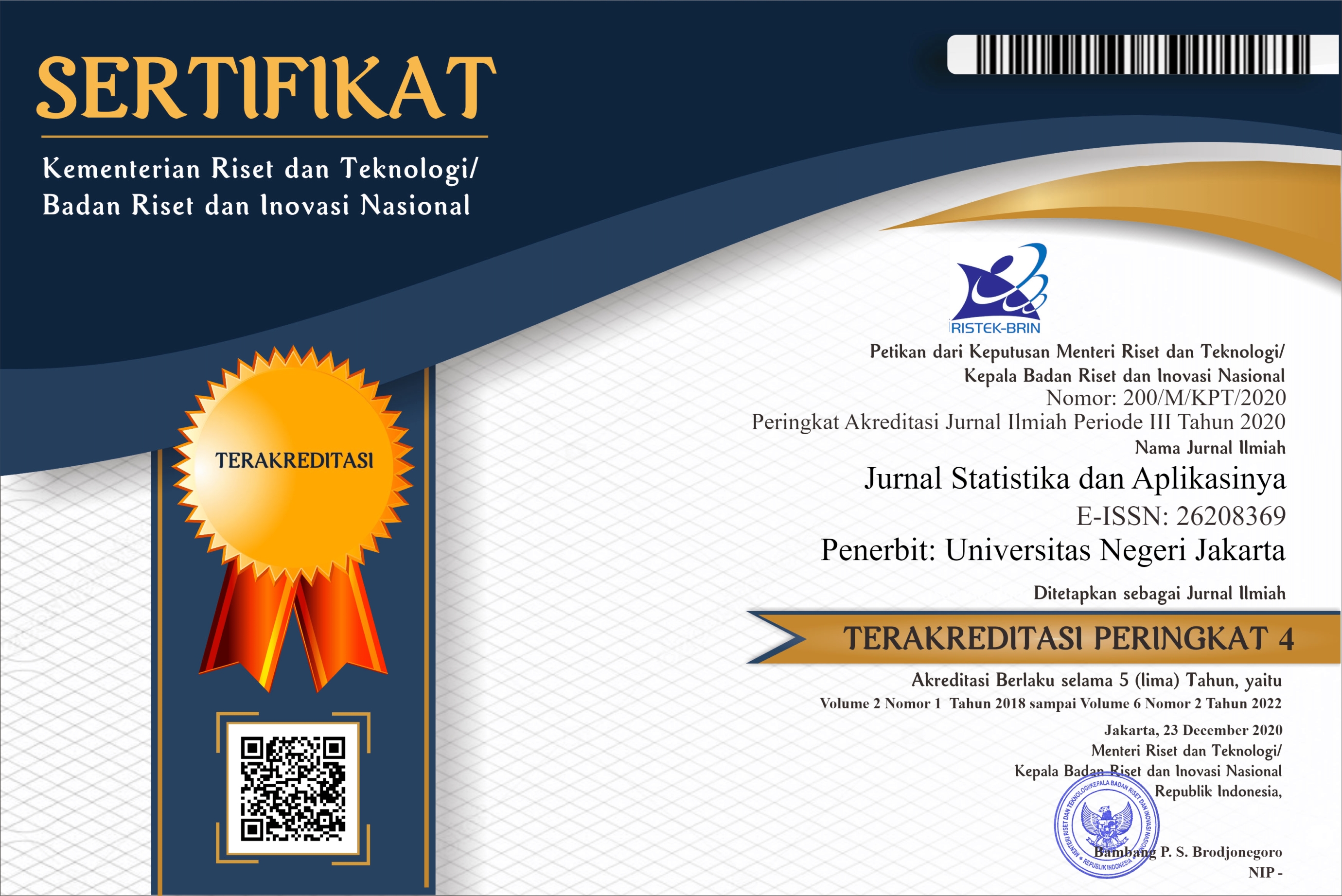Pemodelan Geographically Weighted Regression pada Kasus Stunting di Provinsi Nusa Tenggara Timur Tahun 2020
DOI:
https://doi.org/10.21009/JSA.06204Keywords:
Stunting, Spatial heterogeneity, GWRAbstract
Stunting or short toddlers is one of the problems that Indonesia is currently facing. Based on data from the Indonesia Health Profile in 2020, the highest prevalence of stunting in Indonesia in 2020 was in the East Nusa Tenggara Province. The occurrence of stunting in each district/city has the possibility of having different characteristics from one region or another which is referred to as regional heterogeneity or spatial heterogeneity. This research was conducted to determine the factors that influence stunting cases in each district/city of East Nusa Tenggara Province. This research uses the Geographically Weighted Regression (GWR) method to model stunting cases in each district/city of East Nusa Tenggara Province. The factors that significantly affect stunting in districts/cities in East Nusa Tenggara Province spatially with α =10% percentage of infants receiving complete immunization, the percentage of poor people, the percentage of infants receiving exclusive breastfeeding, the percentage of women who have graduated from senior high school, and the percentage of women who have ever married underage. The modeling of stunting cases in East Nusa Tenggara Province using the GWR method obtained R2 of 99,25% larger than the OLS model of 52,1%, and the AIC of the GWR model of 59,8105 smaller than OLS model.






